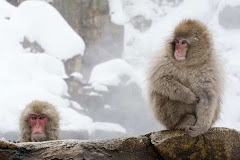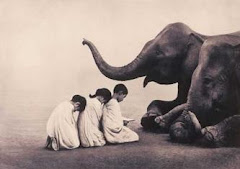 Okay, earthsip is supposed to be an ad-free blog, and this posting is KIND of an ad, but if the means are the ends... Being a reader of the Celtic Tree Oracle (aka Ogham), I (Marina) have a particular affinity for trees, and maybe that's why I find arborsculpture so appealing. Arborsculpture is also permaculture in action, an ancient art form now enjoying a resurgence. Arborsculptor Richard Reames shapes the trunks of young, flexible saplings so that they grow into chairs, fences, gazebos, garden borders, benches, tables, trellises, or earth art. Some of the trees are left in the ground, to continue as living artwork or furniture, like the kitty perch, above, and some are cut after being grown into the shape that's needed, like this chair:
Okay, earthsip is supposed to be an ad-free blog, and this posting is KIND of an ad, but if the means are the ends... Being a reader of the Celtic Tree Oracle (aka Ogham), I (Marina) have a particular affinity for trees, and maybe that's why I find arborsculpture so appealing. Arborsculpture is also permaculture in action, an ancient art form now enjoying a resurgence. Arborsculptor Richard Reames shapes the trunks of young, flexible saplings so that they grow into chairs, fences, gazebos, garden borders, benches, tables, trellises, or earth art. Some of the trees are left in the ground, to continue as living artwork or furniture, like the kitty perch, above, and some are cut after being grown into the shape that's needed, like this chair: While some of these creations are very elaborate, and take decades to grow, you can also do something simpler. I couldn't find a good enough photo, but I particularly like the living table and chairs grown of willow, and still rooted in the ground. (And no, they apparently don't grow too big to continue using them as furniture.) As Reames says, "Everyone with sun and a container of soil can grow trees into the shapes of their desires." Arborsculpture is sustainable, cheap, unique, and beautiful, as well as an example of several permaculture principles---the First Principle of Conservation, since the use of energy would be minimal and you would use only what you need. It also illustrates the Second Principle, Stacking Functions, getting many yields (outputs) from one element (thing) in your system, because as long as the tree is growing in the earth, it can provide shade, shelter wildlife, be the building material itself, be a wind break, fertilize the soil, prevent erosion, raise the water table, and sequester CO2. Depending on your available time and skills, it could also be an example of the Third Principle, Appropriate Scale, where what we design is on a human scale and can be done with the available time, skills, and money that you have. And practicing arborsculpture will certainly help anyone learn the patience necessary to figuring out what your particular spot on earth needs. As Reames says, "The entry price to practicing this art is to check your speed at the garden gate and enter the slow motion world of tree time."
While some of these creations are very elaborate, and take decades to grow, you can also do something simpler. I couldn't find a good enough photo, but I particularly like the living table and chairs grown of willow, and still rooted in the ground. (And no, they apparently don't grow too big to continue using them as furniture.) As Reames says, "Everyone with sun and a container of soil can grow trees into the shapes of their desires." Arborsculpture is sustainable, cheap, unique, and beautiful, as well as an example of several permaculture principles---the First Principle of Conservation, since the use of energy would be minimal and you would use only what you need. It also illustrates the Second Principle, Stacking Functions, getting many yields (outputs) from one element (thing) in your system, because as long as the tree is growing in the earth, it can provide shade, shelter wildlife, be the building material itself, be a wind break, fertilize the soil, prevent erosion, raise the water table, and sequester CO2. Depending on your available time and skills, it could also be an example of the Third Principle, Appropriate Scale, where what we design is on a human scale and can be done with the available time, skills, and money that you have. And practicing arborsculpture will certainly help anyone learn the patience necessary to figuring out what your particular spot on earth needs. As Reames says, "The entry price to practicing this art is to check your speed at the garden gate and enter the slow motion world of tree time."To learn more about arborsculpture and Reames' techniques, or to sign up for one of his classes, or purchase his most recent book, "Arborsculpture- Solutions for a Small Planet," check out his website or his blog His website includes a fascinating, well-done video on the history of arborsculpture, as well as instructions on how to grow a living chair and a living fence.
(But please don't do this with your bicycle! :))




















